37+ Sample Status Reports
-

Candidate Status Report
download now -

Annual Immunization Status Report
download now -
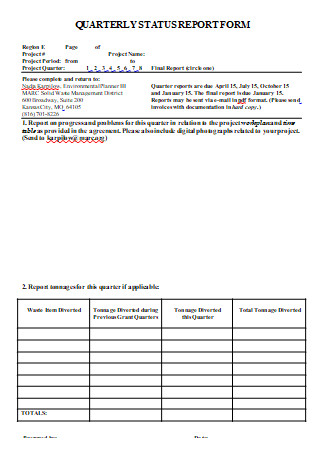
Quarterly Status Report
download now -
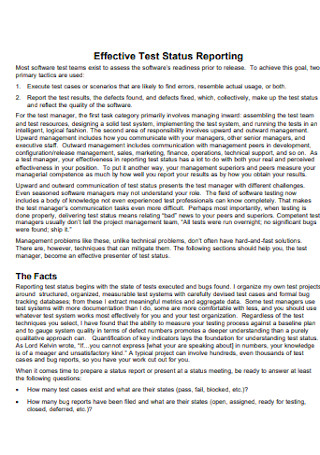
Effective Test Status Report
download now -

Simple Project Status Report
download now -

Work Status Report
download now -

Project Status Report
download now -
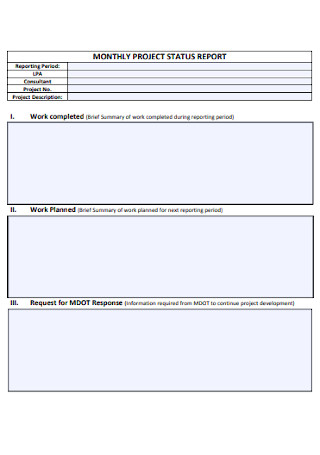
Monthly Status Report
download now -

Real Property Status Report
download now -

Simple Status Report
download now -

Property Status Report
download now -

Financial Status Report
download now -

Site Resource Status Report
download now -

Quarter Capital Status Report
download now -

Change in Status Report
download now -
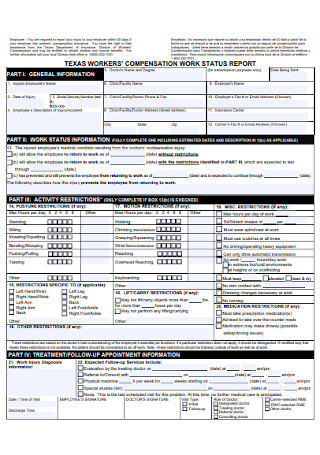
Workers Status Report
download now -

Simple Project Status Report
download now -

Sample Monthly Project Report
download now -
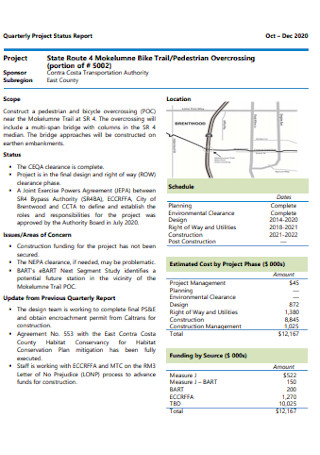
Quarterly Status Report
download now -

Sample Situation Status Report
download now -

Major Project Status Report
download now -

Medical Status Report
download now -

Sample Research Status Report
download now -

Graduate Student Status Report
download now -

IT Project Status Report
download now -

Transcript Status Report
download now -

Budget Status Report
download now -

Sample Mare Status Report
download now -

Physicians Works Status Report
download now -

Request for Status Report
download now -

Staff Status Report
download now -

Initiative Status Report
download now -

Employer Status Report
download now -

Farm Loan Status Report
download now -

Application for Rent Status Report
download now -

Work Status Report
download now -
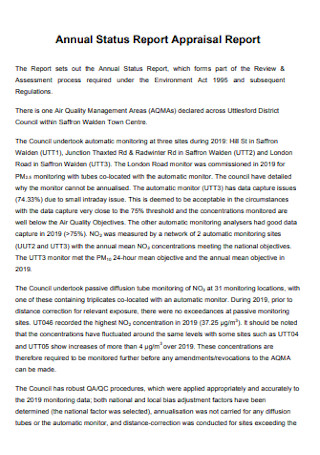
Annual Status Report
download now -

Alcohol Event Status Report
download now
FREE Status Report s to Download
37+ Sample Status Reports
What Is a Status Report?
Basic Elements of a Status Report
Types of Status Report
How to Write a Status Report
FAQs
What is an effective status report?
What is the purpose of a daily status report?
What is a court status report?
What is the significance of daily reports?
What does a report imply?
What Is a Status Report?
A status report is a document that summarizes the overall progress of a project in comparison to the predicted project plan. Statistics show that in the United States, 59 percent of employees say that communication is their team’s top roadblock to success. Accountability is also cited by 29% of respondents as one of the primary causes. The use of a status report is to keep all stakeholders up to date on the progress to prevent problems from arising. Its goal is also to guarantee that the project is completed on schedule. A status report improves communication inside a company by keeping everyone up to date on how the project is progressing. A single, defined report that everyone can refer to stay up to date helps streamline the communication process. A status report also promotes organizational support for your project by ensuring that all goals and objectives are completed by maintaining close communication among team members.
Basic Elements of a Status Report
Whether it’s a one-person job or involving hundreds of workers in several locations, status reports are essential for those leading a project. The status report summarizes a project’s progress, estimated completion date, and actions taken since the previous status report was created. It aids managers in staying on track with projects and identifying difficulties early enough to produce viable solutions. Following that, here are a few of its components:
Types of Status Report
Project managers utilize various reports to keep track of the progress of their projects, including status reports. Others focus on specific areas of the project, while others are more general. The following are some of the more frequent status reporting options.
Task Report
Every project is built up of tasks, and there are usually a lot of them. To keep track of them all, you’ll need a report. Organize all of your project duties in one location. Filter the information to examine the status of each task list to see if any bottlenecks or blockages are preventing progress. It would help if you addressed difficulties before they have an impact on the timeframe of your report.
Variance Report
The variance states the difference between what you originally planned for the project and its current execution. This is how you determine whether or not your project is on track. When planning, establish a baseline using the Gantt chart tool and collect data on your current schedule. Then, compare it to your anticipated location at this point in the plan.
Workload Report
The workload refers to the number of tasks assigned to your team. Increase productivity and morale by balancing their workload so that no one has too much on their plate. View your complete squad together with the number of assignments they’ve been given. Recognize whether someone has too many or too few chores on their plate, and balance their workload to get more done while avoiding burnout.
Availability Report
When it comes to scheduling and workload management, keeping track of when your staff can work when they have paid time off and a holiday is crucial. Know who on your team has too much work and who is available to work right now. This report includes a list of team members as well as their usage rates. This information aids in task reallocation.
Executive Report
This is a report that summarizes a company’s business plan for potential investors. It aids decision-making by combining the findings of several research projects. The executive report serves as a springboard for a discussion with investors.
Resource Report
This is a sort of project report that helps the project team and stakeholders to see how resources are distributed throughout the project’s tasks. The project resource report will detail which team members are assigned to which tasks on which days. The project resource report is beneficial for identifying the issue of project resource over-allocation.
How to Write a Status Report
So, what’s the best way to create status reports? Make sure your update has a clear structure, and use it consistently in future status reports and updates. To keep your report updated, make sure it corresponds to your project brief. Follow this checklist to learn what to include in your project status report, and then watch as we walk you through each step.
Step 1: Collect all pertinent information.
Getting all of the necessary information is never difficult. After all, you’re the one in charge of the project, so you’ll need all of the information. What’s difficult is distilling the facts into a clear and concise image of the endeavor. This implies you should begin by filtering all of the data – no overstuffing. If you’re establishing an online course or membership site, for example, you’ll want to keep your content director up to date on which portions or lessons are finished and which are still in the works.
Step 2: Know who you’re trying to reach.
Knowing who you’re writing a status report for can assist you in giving the necessary information. CEOs, directors, and other high-level executives, for example, frequently require big picture highlights. On the other hand, a boss, direct stakeholders, or teammates need a more thorough notion weekly. Reports to CEOs and directors, on the other hand, are delivered either monthly or quarterly.
Step 3: Prepare your copy ahead of time.
The best sentences are those that are short. They make it simple for your reader to read. Even if you have to provide details in some areas, accompany them with bar graphs and charts and a project completion date.
Step 4: Make use of an appropriate template.
To save time and avoid errors, you should use a standard structure or template for your report. Choose one that covers all of the essentials for a status report. You may also better control your reader’s expectations this way. You can miss a crucial element or two if you don’t use a template for your project status report. Alternatively, your boss may have more inquiries. If this happens frequently, it can quickly become highly aggravating. Not only for you but also for the recipient. Finding it difficult to create a template from scratch? Choose from a variety of ready-to-use templates provided by presentation software. This will allow you to construct a project status report quickly. Each template is adjustable, allowing you to customize it to match your company’s logo. Save the template once you’ve made these changes, so you don’t have to alter it every time you create a status report.
Step 5: Maintain Consistency
It’s pointless to have a status update if it’s not timely or in a format that your audience can understand. The frequency of status updates should never be inconsistent. Choose a structure that works for you, educate your audience about the report, and then stay to it; don’t change it every week. Then, regularly, deliver it, such as every Thursday for team task reports. Once stakeholders have a handle on it, they will always know what to anticipate and when to expect it.
FAQs
What is an effective status report?
It provides an overview of where you are in a project, where your projections anticipate you will be, and what real-world project issues have arisen since the previous report. Due to the importance of this project status report update, you and your team must create effective project status reports.
What is the purpose of a daily status report?
Daily status reports examine a project’s day-to-day progress to see if it is progressing according to plan or if there is a delay for some reason. It’s an excellent way to see if anything goes smoothly or if any problems could hinder performance plans.
What is a court status report?
A status report is a document that summarizes a particular situation as of a specific date. A court may order any concerned party to file a status report before it while examining a question before it so that the court can consider the information while deciding on any subject before it.
What is the significance of daily reports?
For two primary reasons, daily reporting makes your life easier. First and foremost, it ensures that you do not forget your most essential items. With so many perplexities in our daily lives, it’s easy to lose sight and focus on the knucklehead stuff: minor issues that don’t matter in the long run. Second, it makes it easier to spot when you’re fixated on anything. If you can’t mark something off your to-do list for a more extended amount of time, you’re probably in need of assistance. It’s a lot simpler to admit anything when it’s written down.
What does a report imply?
A report is a document that organizes and presents information for a specific audience and purpose. Although report summaries may be delivered orally, total words are almost always delivered in written documents.
The creative status report is a critical communication tool. You’ll send reports weekly, twice weekly, or monthly. It will be significantly easier to report if you understand the purpose of a status report and all of its components. Now that you’ve read through it, how does this compare to your standard status report processes? Which of the items on the preceding list do you believe are not necessary? It wasn’t difficult to create a status report, was it? The remains are for you to collect the required data, filter out the most critical information, and paste it into a template. With the aid of a standard daily report template and adequate reporting tools, such a report can be created in a matter of minutes. So, are you prepared to create one?
